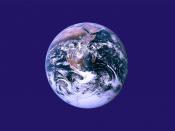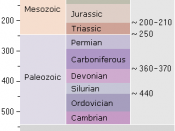Of all the species that have lived on the Earth since life first appeared here 3 billion years ago, only about one in a thousand are still living today. All the others, the vast majority, became extinct, typically within ten million years or so of their first appearance. This large extinction rate has had an important influence on the evolution of life on Earth.
Humans are presently causing the record mass extinction of species since the extinction of the dinosaurs 65 million years ago. If current trends carry on one half of the entire species of life on earth will be extinct in 100 years. Some 50 percent of the world's flora and fauna could be on a path to extinction within a hundred years.
Our impact is different from the mass extinctions of the past. They wiped out whole groups of animals, notably the dinosaurs, whereas humans are picking off individual species.
The collective actions of humans developing are bringing an end to the lives of creatures across the Earth. In addition, in the past, biodiversity recovered as species spread into new ecological places, but humans are wiping out positions as well as organisms.
Studies of mass extinctions have uncovered facts that are predictable when considering the possibility that there are events with increased levels of ionizing radiation. Mass extinctions are not random and are not related to an organism's ability to survive. Unlike other times of extinction, mass extinctions are abrupt at the family level.
Those species which have a broader geographic dispersal and few species within a group have extinction resistance during mass extinctions. Typically, it is those marine organisms that are in the open-ocean or deep-ocean, such as certain shellfish, that survive or are the last holdouts at mass extinction boundaries. However, during all...


